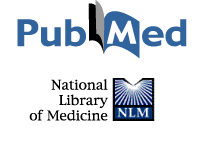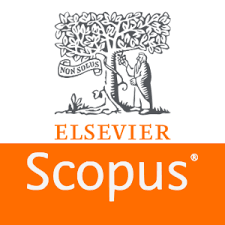RADIOGRAPHIC FINDINGS OF TEMPOROMANDIBULAR JOINT OSSEOUS CHANGES USING CONE-BEAM COMPUTED TOMOGRAPHY IN A SAUDI POPULATION: A RETROSPECTIVE STUDY
DOI:
https://doi.org/10.55519/JAMC-02-14546Keywords:
Cone-beam computed tomography (CBCT); Temporomandibular joint (TMJ); Osseous changes; Degenerative joint disease; Condylar flattening; Erosion; Subchondral cyst; Saudi population; Surgical planning; TMJ imaging.Abstract
Background: The temporomandibular joint (TMJ) is a complex synovial articulation that plays a critical role in mastication, speech, and mandibular movements. Pathologies affecting the TMJ, such as internal derangement, osteoarthritis, and degenerative bone changes, can significantly impair function and quality of life. Objectives were to evaluate the prevalence and pattern of osseous changes in the temporomandibular joint (TMJ) using cone-beam computed tomography (CBCT) in a Saudi population, with emphasis on diagnostic and surgical relevance. Methods: This retrospective study was conducted in the Department of Diagnostic Sciences, Qassim University, Saudi Arabia, and included 414 bilateral CBCT scans obtained between January 2020 and December 2024. Scans were evaluated for degenerative bony changes such as condylar flattening, erosion, osteophytes, subchondral sclerosis, and cysts. Two experienced radiologists performed independent assessments, and inter-examiner reliability was calculated. Demographic associations were analyzed using Chi-square and ANOVA tests, with significance set at p<0.05. Results: Of the 414 subjects, 260 (62.8%) were male and 154 (37.2%) were female. Condylar flattening was the most frequent pathology, observed in 10.63% of right and 9.90% of left TMJs, followed by erosion and subchondral cysts. A total of 73.7% of cases exhibited radiographic abnormalities. Age was significantly associated with the presence of TMJ pathologies (p<0.01), particularly in individuals aged 40–60 years. No statistically significant association was found between gender and TMJ degeneration. Conclusions: cone-beam computed tomography effectively detects subtle and early-stage TMJ osseous changes, with flattening, erosion, and cystic degeneration being the most prevalent findings. The strong age-related pattern of TMJ degeneration supports the need for early radiographic screening, especially in middle-aged adults. From a surgical perspective, CBCT imaging plays a vital role in preoperative planning, aiding in the decision-making process for conservative versus surgical interventions.
References
1. Roberts WE, Goodacre CJ. The temporomandibular joint: a critical review of life‐support functions, development, articular surfaces, biomechanics and degeneration. J Prosthodont 2020;29(9):772–9.
2. Chang CL, Wang DH, Yang MC, Hsu WE, Hsu ML. Functional disorders of the temporomandibular joints: Internal derangement of the temporomandibular joint. Kaohsiung J Med Sci 2018;34(4):223–30.
3. Alshomrani F. Cone-Beam Computed Tomography (CBCT)-based diagnosis of dental bone defects. Diagnostics 2024;14(13):1404.
4. Berry K, Padilla M, Mitrirattanakul S, Enciso R. Temporomandibular joint findings in CBCT images: A retrospective study. Cranio 2024;42(5):519–24.
5. Talaat WM, Adel OI, Al Bayatti S. Prevalence of temporomandibular disorders discovered incidentally during routine dental examination using the Research Diagnostic Criteria for Temporomandibular Disorders. Oral Surg Oral Med Oral Pathol Oral Radiol 2018;125(3):250–9.
6. Ahmed J, Sujir N, Shenoy N, Binnal A, Ongole R. Morphological assessment of TMJ spaces, mandibular condyle, and glenoid fossa using cone beam computed tomography (CBCT): a retrospective analysis. Indian J Radiol Imaging 2021;31(1):78–85.
7. Singh P, Parate AS, Abdul NS, Chandra C, Bagewadi SB, Hirpara DR. Retrospective evaluation of incidental findings of temporomandibular joint region in CBCT scans. J Contemp Dent Pract 2021;22(12):1394.
8. de Holanda TA, de Almeida CC, Ribeiro Silva AE, Damian MF, Boscato N. Prevalence of abnormal morphology of the temporomandibular joint in asymptomatic subjects: a retrospective cohort study utilizing cone beam computed tomography. J Craniomandib Funct 2020;12(1).
9. Theodoridis C, Damaskos S, Angelopoulos C. Frequency and clinical significance of incidental findings on CBCT imaging: a retrospective analysis of full-volume scans. J Oral Maxillofac Res 2024;15(1):e5.
10. Price JB, Thaw KL, Tyndall DA, Ludlow JB, Padilla RJ. Incidental findings from cone beam computed tomography of the maxillofacial region: a descriptive retrospective study. Clin Oral Implants Res 2012;23(11):1261–8.
Downloads
Published
How to Cite
Issue
Section
License
Copyright (c) 2025 Waleed Abdulhadi Alalawi, Shaul Hameed Kolarkodi, Khalid Alotaibi, Abdulrahman Altwaijri, Faraj Alotaiby

This work is licensed under a Creative Commons Attribution-NoDerivatives 4.0 International License.
Journal of Ayub Medical College, Abbottabad is an OPEN ACCESS JOURNAL which means that all content is FREELY available without charge to all users whether registered with the journal or not. The work published by J Ayub Med Coll Abbottabad is licensed and distributed under the creative commons License CC BY ND Attribution-NoDerivs. Material printed in this journal is OPEN to access, and are FREE for use in academic and research work with proper citation. J Ayub Med Coll Abbottabad accepts only original material for publication with the understanding that except for abstracts, no part of the data has been published or will be submitted for publication elsewhere before appearing in J Ayub Med Coll Abbottabad. The Editorial Board of J Ayub Med Coll Abbottabad makes every effort to ensure the accuracy and authenticity of material printed in J Ayub Med Coll Abbottabad. However, conclusions and statements expressed are views of the authors and do not reflect the opinion/policy of J Ayub Med Coll Abbottabad or the Editorial Board.
USERS are allowed to read, download, copy, distribute, print, search, or link to the full texts of the articles, or use them for any other lawful purpose, without asking prior permission from the publisher or the author. This is in accordance with the BOAI definition of open access.
AUTHORS retain the rights of free downloading/unlimited e-print of full text and sharing/disseminating the article without any restriction, by any means including twitter, scholarly collaboration networks such as ResearchGate, Academia.eu, and social media sites such as Twitter, LinkedIn, Google Scholar and any other professional or academic networking site.










